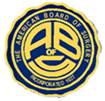Buccal Fat Pads – What are they and what can be done about them?
Posted on Friday, January 11th, 2013 by Dr. Babak Dadvand
Being in the heart of “Tinsel Town” there is an emphasis on image. When talking about the face, a chiseled look in men and a thinner look in women’s faces are requests that I have from certain patients. But what makes one face round and another face sculpted? Well, there are many things that contribute to facial shape, from bone structure, to the facial muscles to the quality of the skin.
However, one of the lesser known structures in the faces that can make it rounder is known as the buccal fat pads. These are two large ball-like collection of fat under the cheek bone that in some patients can create fullness in the midface-cheek area, often referred to as the “chubby cheek” look by my patients.
The buccal fat pad has many ‘fingers’ that extend out from it to reach up to the temple area as well as down to the jawline. Whether they have any function is not clear but the bottom line is that we do not need them, just like wisdom teeth or an appendix.
Buccal lipectomy is a procedure where these fat pads are removed. It is a very straightforward procedure that is performed on the inside of the mouth; thus, no external scars. Through a very small incision just opposite the upper second molars, the buccal fat pad is teased out and removed. Portions of it or almost all of it can be removed. A single dissolvable stitch closes the incision. The recovery is very simple. The only restrictions I give my patients is to not eat anything hard (chips, pretzels, etc) for the first two days. Also, I recommend that they use mouthwash for the first several days after the procedure. Most patients have some swelling after the procedure that may last up to 4-6 weeks.
Buccal lipectomy can be a powerful procedure to give definition to the area just under the cheek bones. This procedure can be performed by itself or in combination with other facial reshaping techniques such as chin augmentation or facial fat grafting.
This entry was posted in Aesthetic Surgery. Bookmark the permalink.





 4.9 stars - based on 94 reviews
4.9 stars - based on 94 reviews
 4.9 stars - based on 62 reviews
4.9 stars - based on 62 reviews
